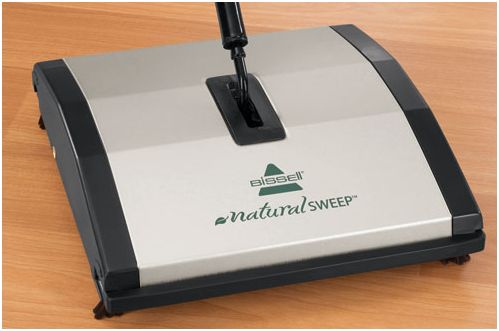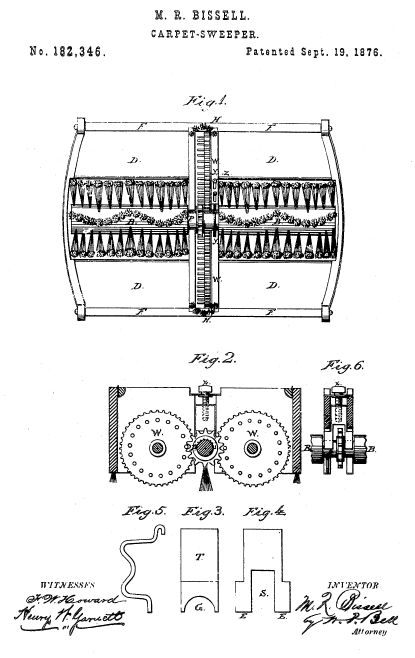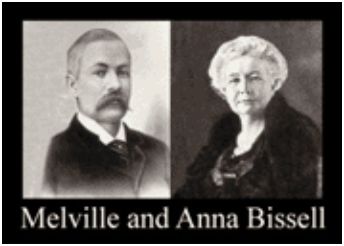Melville and Anna Bissell
by Andrew Boyd
Today, a husband and wife engineer success. The University of Houston's College of Engineering presents this series about the machines that make our civilization run, and the people whose ingenuity created them.
Brooms have been around since, well, since there's been a need to get dirt off the floor. It's quite likely our early human ancestors used tree branches to tidy up their caves. But it wasn't until the nineteenth century that we witnessed the first major mechanical breakthrough in the science of sweeping — the carpet sweeper.

Brooms don't work very well on carpets. Dirt gets trapped in the fibers. Brooms can't move it. Carpet sweepers are designed to fix that. As they're rolled back and forth, the motion of the wheels drives bristles which in turn agitate the dirt. A well designed carpet sweeper then flings the dirt into a receptacle. The most challenging part of making a good carpet sweeper is in the "fling and catch."

Early mechanical sweepers can be traced to around 1811. But it wasn't until 1876 that a truly successful design was introduced by Melville and Anna Bissell. The Bissells originally ran a business selling fine china, which arrived at their store packed in sawdust. Melville purchased a carpet sweeper, but wasn't happy with it. So he made his own.

Anna thought it was terrific. So the two shop owners began making and selling them. They started small at first, with a few employees in an upstairs room. Together, the couple made sales calls to houseware stores near their home in Grand Rapids, Michigan. The Bissells were tenacious and they had a good product. Homemakers wanted them. Seven years after their humble beginning, the Bissells incorporated their business and built a modern, five story factory. With a focus on quality, the Bissell company was well on its way to dominating a growing market for carpet sweepers. And then tragedy struck.
Melville died of pneumonia in 1889. He was only 45. But while it was a personal tragedy for the family, business thrived. Anna picked up the pieces, and for more than thirty years led a successful worldwide expansion of the company. She eventually passed the reins to her son, Melville Bissell, Jr., who faced a new competitive challenge — the vacuum cleaner.
Vacuums have largely supplanted carpet sweepers, but not entirely. Carpet sweepers are light weight and energy efficient — great for a quick pick up when you don't want to haul out the hoover. And they're much quieter than vacuums. Restaurants continue to use them because they don't disturb the customers. Bissell remains the most popular brand of carpet sweeper to this day. And the company is still family owned and operated — the legacy of a husband and wife team with an idea for a better picker upper.
I'm Andy Boyd at the University of Houston, where we're interested in the way inventive minds work.
Bissell, Inc. From the Funding Universe Web site: www.fundinguniverse.com/company-histories/BISSELL-Inc-Company-History.html. Accessed January 18, 2010.
The mechanical picture of the inside of a carpet sweeper is taken from the Web site of the U.S. Patent Office: uspto.gov. Accessed January 18, 2010. The remaining pictures are taken from the Web site of Bissell, Inc.: www.bissell.com. Accessed January 18, 2010.